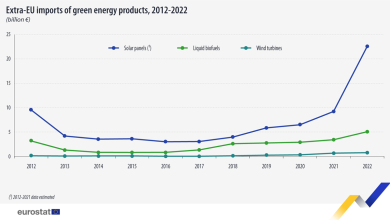Oil, gas and coal: New support schemes?
Remember that in 2010 the global support scheme for the production of energy from renewable sources was worth around 66 billion dollars. In the same year, fossil sources used in energy production, industry, transport etc. used worldwide subsidies of about 775 thousand billion dollars, which may be a true paradox. The economists of the sector blame either an entirely inattentive political approach, or especially the unpredictable power of what more recently we call generically lobbying. Returning to the 66 billion dollars used in support to produce energy, two thirds, i.e. 44 billion, were allocated to renewable sources, and the remaining of 22 billion dollars, i.e. one third of the total amount of 66 billion, were allocated to obtain biofuels. Regarding the amount of 775 thousand billion dollars, it was consumed for the entire oil and gas production chain, so for the so-called fossil sources used to produce energy and not only. Specialists have assessed no more than 100 billion dollars for energy production, the remaining subsidies being used in the entire oil and gas sector, resources currently used in industry, transport etc.
Regarding the developed states, state support to produce energy from renewable sources reached around 45 billion euros per year, and the total amount of subsidies from the emerging countries, as well as those actually underdeveloped, reaches the figure of 409 billion euros per year, the amounts obviously varying year after year and their breakdown on states always being different, depending on many unknown factors.
Returning to the further predominant use of fossil hydrocarbons to produce energy, the lobby for the development of fossil sources has had many followers during the US election campaign. The Vice-President of ‘Legambiente’ (Italy’s’ Environmental Professional Association) stated on the side-lines of this support: “There are the so-called analysts who say what they say by forgetting that the energy system is already focusing on fossil sources, this only referring to the oil lobby that directly supported Trump; the explanation of electoral support being also found in billions of dollars from oil activities.”
On the same line of approach, we would also recall another supporter of fossil sources – Andrea Boraschi, responsible for Greenpeace’s Energy and Climate campaign. In Europe, there is an intensive debate on engine efficiency, along with emissions reductions, to reach a decision that will lead to soft solutions for such pressing issues. We obviously expect, being even required, political decisions regarding the target for 2020! Defining the complex ideas will consider the various energy strategies in certain states/economies, as well as the use of coal for India and China, oil and gas for the U.S. Moreover, Boraschi recalled specialists in the energy sector that renewable sources attract more capital than fossil sources.
According to IEA (International Energy Agency), it is expected that by 2020 oil demand will drop by 3.7 million barrels per day, and gas demand – by around 330 billion cubic meters. As far as coal is concerned, demand for this resource will also plunge by 230 million tons, aggregating these declines leading to a decrease by 3.95% in the use of these sources to produce energy at global level. Obviously, by extrapolation, there will also be a drop in CO2 by more than 4.7%, with obvious benefits in terms of improving health-related issues, taking into account the reduction in emissions. According to U.S. National Academy of Sciences, expenses with decrease by USD 120bn per year in the U.S. given the lower pollution, to support the health system, money coming from the large energy producers.
For example, Italy spends every year EUR 63bn for transport, purchasing fossil fuels, thus preferring mainly the conventional transport. CO2 are obviously important as well, Italy issuing for free greenhouse gas emission allowances. There are positive examples, among the first being Germany.
Specialists in the field indicate mandatory targets on three industrial and transport areas and not only, supporting energy from renewable sources with state aids, even this means remodelling the power transmission grids, refurbishments and technical adjustments to absorb the quantities of electricity, in parallel with the insistence on solving the energy efficiency problem by means of conclusive investments, one of the three areas I was talking about earlier.
There are undoubtedly obstacles in Germany as well, but the strategic perspectives of the country are mandatory. Analysis regarding the various technological solutions in the emerging countries reveals an undeniable fact, that the good practices applied only in one or two European countries matter a little in the ‘battlefield’ with climate change. Maybe a ‘single voice’, European, should be defined for this complex and far from easy battle, in other words applying the measures, approaches, aids in the majority of Member States, so that the proposals of the Conference in Paris are implemented by technological collaboration between the developed countries and those, let’s say, emerging or less developed.



